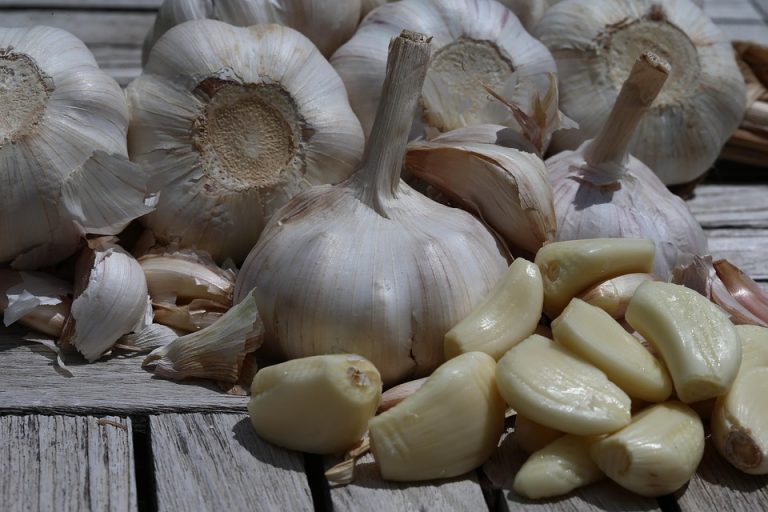Belly fat burning chili wakes your metabolism like a bell in the morning. It’s not a magic trick or a fad; it’s a simple dietary ally that stirs your body into higher gear. If you want to shrink your waistline and keep the change off, understanding this spicy secret matters to you—and to your everyday energy, mood, and confidence.
You’ll hear science and sass in what follows. I’ll show you how the right chili can rev your internal furnace, how ingredient combos matter, and how to use flavor as fuel. Read with an appetite for change. This is about real food and real results.
Contents
- How Belly Fat Burning Chili Fires Up Thermogenesis
- It Boosts Fat Oxidation With Smart Ingredient Pairing
- It Controls Appetite and Lowers Calorie Intake
- It Improves Circulation and Insulin Sensitivity
- It Encourages a Stronger Metabolic Habit Loop
- It Scales From Mild To Mighty So You Keep Progressing
- It Supports Recovery And Reduces Inflammation
- Practical Tips To Make Chili Work For You
- Sample Belly-Fat-Friendly Chili Recipe
- Lifestyle Moves That Amplify Chili’s Benefits
- Bottom Line
- FAQ
How Belly Fat Burning Chili Fires Up Thermogenesis
Your body’s furnace is always on, but certain foods turn up the heat. Belly fat burning chili contains capsaicin, the compound that makes peppers hot. Capsaicin triggers thermogenesis—your body burns more calories to keep cool after spice heats you up.
Studies published by university nutrition departments show that capsaicin increases calorie burn and fat oxidation for a few hours after eating. When you make chili part of a sensible meal plan, you’re not relying on miracles; you’re stacking tiny metabolic advantages that add up. Use lean protein, fiber-rich beans, and whole tomatoes, and the effect becomes practical and repeatable.
This is not about eating lava. It’s about strategic spice. Start modest, build tolerance, and let the flavor pull double duty: pleasure and performance.
It Boosts Fat Oxidation With Smart Ingredient Pairing
When you combine spicy peppers with protein and fiber, your body prefers burning fat. Belly fat burning chili loaded with lean turkey or beans forces your metabolism to process the meal more actively. Protein requires energy to digest; fiber stabilizes your blood sugar. Together they make your body a better fat burner.
Clinical nutrition experts note that meals high in protein and low in refined carbs increase satiety and decrease overall calorie intake. That means you’re full longer and less likely to snack on empty calories. Add tomatoes and onions for antioxidants, and you’ve got a meal that feeds both taste and metabolic health.
Think of your bowl as a tool, not punishment. It’s comforting, satisfying, and built to work for your body.
It Controls Appetite and Lowers Calorie Intake
Hunger is often the saboteur of diets. The right chili fights back. Belly fat burning chili helps reduce appetite by increasing feelings of fullness after meals. Capsaicin modulates appetite hormones so you’re less likely to reach for second helpings or late-night snacks.
Researchers from metabolic clinics have seen subjects eat fewer calories when spicy food is part of meals. That’s a real, measurable advantage. You don’t need to starve to lose inches—you need smarter meals that keep cravings in check.
Make your chili colorful and heavy on vegetables. The texture and volume trick your brain into satisfaction, and your body gets nutrients, not empty calories.
It Improves Circulation and Insulin Sensitivity
Good circulation and steady blood sugar matter for belly fat loss. Belly fat burning chili can help both. Capsaicin improves blood flow and has been linked to better insulin sensitivity in several nutrition studies from medical schools.
Better insulin sensitivity means your body is less likely to store excess calories as belly fat. It uses what you eat for energy more efficiently. Over time, this leads to fewer blood sugar spikes and steadier energy—so you’re less likely to binge when fatigue hits.
You don’t need to overhaul everything—just add a disciplined bowl of chili a few times a week and pair it with movement. Small consistent changes win.
It Encourages a Stronger Metabolic Habit Loop
Flavor creates routine. When you love something that’s also healthy, you stick with it. Belly fat burning chili is a habit-forming meal in the best sense: it’s tasty, easy to make, and versatile. That’s compliance—arguably the most important factor in any wellness plan.
Behavioral scientists note that habits built around pleasure and simplicity last longer than those built on willpower alone. A weekly chili ritual—meal prepping, freezing portions, and using it after workouts—turns metabolic benefit into a lifestyle. You’ll eat better more often without feeling deprived.
Make this practical: double the recipe, freeze portions, and keep quality toppings (like avocado and Greek yogurt) ready. The more automatic it becomes, the more your metabolism wins.
It Scales From Mild To Mighty So You Keep Progressing
You can titrate spice like you would a workout. Belly fat burning chili lets you start gentle and increase as tolerance grows, which keeps the metabolic stimulus fresh. Your body adapts; the goal is to keep stimulating it without burning out.
Nutritionists suggest cycling the intensity of dietary stimuli—vary spices, fibers, and proteins—so your metabolism gets repeated reminders to stay active. Add different peppers, try smoky chipotle, or mix in a teaspoon of cayenne. Little tweaks prevent plateaus.
This is about sustainable performance, not dramatic deprivation. Keep your meals interesting and your metabolism guessing just enough.
It Supports Recovery And Reduces Inflammation
Fat loss isn’t just about calories; it’s about recovery. Chronic inflammation hampers metabolism and teeth into willpower. Belly fat burning chili includes ingredients—like tomatoes, garlic, and peppers—that have anti-inflammatory properties and antioxidants. That supports recovery from exercise and reduces metabolic drag.
Clinical nutrition research connects lower inflammation with better weight loss outcomes. When your meals help calm inflammation, your hormonal environment improves. You recover faster, sleep better, and your body moves toward fat loss naturally.
Balance your chili with healthy fats like olive oil or avocado to round out nutrition and support absorption of fat-soluble vitamins. This is nourishment that helps your metabolism heal and perform.
Practical Tips To Make Chili Work For You
Don’t guess—build. Here are practical, immediately actionable steps to make your chili a metabolic weapon.
-
Start with lean protein: ground turkey, chicken, or mixed beans for a vegetarian option.
-
Layer in complex carbs: add quinoa or a small serving of sweet potato for sustained energy.
-
Use spices smartly: cumin, smoked paprika, and a measured pinch of cayenne give depth without overwhelming heat.
-
Prioritize fiber: peppers, tomatoes, onions, and beans keep you full and gut-happy.
-
Control portions: a generous bowl is enough—think 1.5–2 cups—paired with a leafy side salad.
-
Meal prep: cook a large pot, portion, and freeze. Consistency beats intensity.
These moves keep your plan human and usable. You won’t need to be heroic. You’ll need to be persistent.
Sample Belly-Fat-Friendly Chili Recipe
Make a pot on Sunday and thank yourself all week. This version balances flavor, fiber, and metabolic punch.
-
Sauté onions and garlic in a tablespoon of olive oil.
-
Add one pound of lean ground turkey or a mix of black beans and kidney beans.
-
Stir in diced tomatoes, bell peppers, and a small can of tomato paste.
-
Season with cumin, smoked paprika, oregano, and one teaspoon of cayenne (adjust to taste).
-
Simmer 25–30 minutes, taste, then finish with chopped cilantro and a squeeze of lime.
Portion with a side of greens and a quarter of an avocado for healthy fat and a creamy finish. Repeat this two to four times a week and watch your clothes loosen in a practical, steady way.
Lifestyle Moves That Amplify Chili’s Benefits
Chili isn’t a standalone solution. It’s a tool in your metabolic toolbox. Combine it with movement: brisk walking, strength training twice a week, and sleep that doesn’t sabotage your hormones. Hydration and stress reduction matter too.
Experts at major universities emphasize that diet quality, activity, and sleep work together. Adding chili makes everything else slightly easier—more energy, better appetite control, and a cleaner metabolic signal.
Treat it like a secret ingredient that enhances other good choices. Use it, love it, and don’t overcomplicate the rest.
Bottom Line
Bottom Line
Belly fat burning chili is not a miracle cure, but it’s a powerful, practical ally. It stokes thermogenesis, helps burn fat, tames hunger, improves circulation, supports recovery, and builds lasting habits. When you pair spicy, balanced chili with smart lifestyle choices, your metabolism responds—steadily and sustainably.
You deserve food that sings and supports. Make chili part of the plan and let it help you inch toward the body and energy you want.
FAQ
Is Belly Fat Burning Chili Safe For Everyone?
For most people, yes—when eaten sensibly. If you have gastrointestinal issues like ulcers or reflux, check with your doctor before adding capsaicin-rich foods. Pregnant individuals and those on certain medications should consult a clinician.
How Often Should I Eat Belly Fat Burning Chili To See Results?
Two to four times a week is a practical frequency. Consistency matters more than daily perfection. Combine it with protein, fiber, and a movement routine for best results.
Will Eating Chili Alone Melt Belly Fat Quickly?
No. Chili speeds metabolism a bit and helps with appetite control, but it’s not standalone. Pair meals with exercise, sleep, and stress management for meaningful, lasting change.
Can I Use Hot Sauce Instead Of Whole Peppers?
Quality hot sauces can help, but whole peppers offer fiber and additional nutrients. If you use hot sauce, check for added sugars and sodium.
How Do I Build Tolerance Without Discomfort?
Start small. Add a little cayenne or mild peppers and increase over weeks. Pair spice with cooling foods like yogurt or avocado to manage heat comfortably.
— — —
References
The National Institutes of Health provides accessible research summaries on capsaicin and metabolism that explain thermogenesis and fat oxidation (http://www.nih.gov/).
Harvard T.H. Chan School of Public Health offers evidence-based guidance on diet, inflammation, and weight management relevant to chili and metabolic health (http://www.hsph.harvard.edu/).
The American Journal of Clinical Nutrition publishes peer-reviewed studies on capsaicin’s effects on appetite and energy expenditure showing measurable metabolic benefits (http://www.ajcn.org/).
The Centers for Disease Control and Prevention outlines practical nutrition and physical activity recommendations that align with making chili part of a healthy lifestyle (http://www.cdc.gov/).
The Mayo Clinic provides clinical insights on gastrointestinal conditions and dietary tolerances, useful if you have concerns about spicy foods (http://www.mayoclinic.org/).








